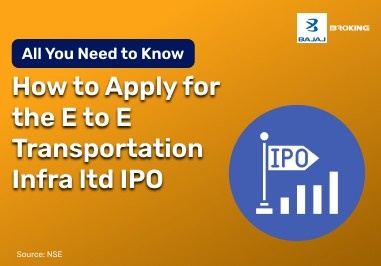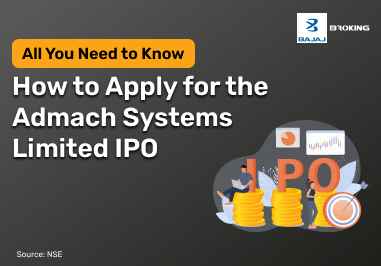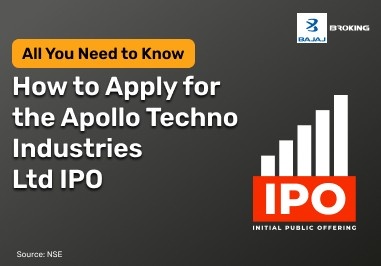Investors today have access to various platforms for managing their investments, with online brokers and robo-advisors being two prominent options. Each serves distinct functions and caters to different investor preferences.
An online broker provides a digital platform for individuals to buy and sell securities independently. Investors have full control over their investment decisions and can execute trades directly through the broker's platform.
In contrast, a robo-advisor is an automated platform that offers algorithm-driven financial planning services with minimal human intervention. After assessing an investor's financial goals and risk tolerance through an online questionnaire, the robo-advisor automatically constructs and manages a diversified portfolio on behalf of the investor.
The choice between using an online broker or a robo-advisor depends on factors such as the investor's experience, desired level of control, and the amount of time they wish to dedicate to managing their investments. Understanding the functionalities and services of each can assist investors in selecting the platform that aligns with their financial objectives.
What is an online broker?
An online broker is a digital service that allows individuals to buy and sell financial instruments such as stocks, bonds, mutual funds, and exchange-traded funds (ETFs) through an internet-based platform. These brokers serve as intermediaries between the investor and the financial markets, facilitating transactions and offering tools for portfolio management. Unlike traditional brokers, online brokers eliminate the need for personal interaction, giving users the ability to make trades independently. Most platforms provide access to real-time market data, research reports, charting tools, and analysis features to support informed decision-making. Investors are required to open a demat account and a trading account to begin using the platform. Online brokers are commonly used by self-directed investors who prefer to manage their own investments. The shift towards digital trading has made investing more accessible, with lower costs and quicker execution. This model supports a wide range of investment strategies and timeframes.
What is a Robo-Advisor?
A robo-advisor is an online platform that offers automated financial planning and investment management services. It uses algorithms and technology to create and manage a diversified portfolio based on an individual’s financial goals, risk tolerance, and investment horizon. The process usually begins with an online questionnaire that gathers information about the investor’s income, goals, risk appetite, and preferences. Based on the responses, the robo-advisor recommends a customised asset allocation and handles the investment process automatically. These platforms typically invest in low-cost instruments such as exchange-traded funds (ETFs) and rebalance portfolios periodically to maintain the target allocation. Human intervention is minimal, and customer interaction is mostly digital. Robo-advisors are designed to simplify investing by using a standardised and data-driven approach. Investors do not need to open separate demat accounts for trading, as the entire process is integrated within the platform. The service is intended for individuals seeking a structured and automated investment experience.
Working with an online broker
Working with an online broker begins by registering and opening an account on their platform. After funding the account, users can browse and choose from a range of investment products such as stocks, bonds, and ETFs. The platform provides tools like real-time market updates, research reports, and technical analysis to support decision-making. Investors are responsible for selecting securities and placing orders themselves. This setup typically appeals to individuals who prefer direct control over their investments. The process demands active participation and an understanding of market trends to manage trades and monitor portfolio performance effectively.
Working with a Robo-Advisor
Working with a robo-advisor starts by filling out a digital questionnaire that assesses an individual’s financial objectives, risk appetite, and investment duration. Using this data, the platform designs a personalised portfolio aligned with the investor’s profile. The robo-advisor automates investment decisions, including asset allocation and periodic rebalancing, to maintain alignment with set goals. Investors do not need to actively monitor or adjust their portfolios, as these tasks are handled by the algorithm. This approach is generally structured for those preferring a passive method of investing, with minimal involvement in daily investment decisions.
Key differences between online brokers and Robo-Advisors
Aspect
| Online Broker
| Robo-Advisor
|
Control
| Investors have full control over investment decisions and trade executions.
| Investment decisions are automated based on algorithms, with minimal investor intervention.
|
Cost Structure
| Typically charge per trade or a flat fee; costs vary by broker.
| Usually charge a management fee as a percentage of assets under management.
|
Investment Advice
| Generally do not provide personalized investment advice.
| Offer automated, algorithm-driven financial planning and investment management.
|
Time Commitment
| Requires active involvement in researching and managing investments.
| Designed for passive investors seeking automated portfolio management.
|
Customization
| High level of customization in building and managing a portfolio.
| Limited to the portfolio models offered by the robo-advisor, based on investor profiles.
|
Human Interaction
| Limited to customer support; investment decisions are self-directed.
| Minimal to no human interaction; some platforms may offer access to human advisors for a fee.
|
Pros and cons of using an online broker
Pros:
Full Control: Investors make all decisions regarding their investments, allowing for personalized strategies.
Access to Diverse Instruments: Ability to trade a wide range of securities, including stocks, bonds, ETFs, and options.
Real-Time Data: Immediate access to market data and research tools to inform trading decisions.
Potential Cost Savings: For active traders, per-trade fees may be more economical than management fees charged by robo-advisors.
Cons:
Time-Consuming: Requires significant time and effort to research and manage investments effectively.
Requires Market Knowledge: Investors need a solid understanding of financial markets and investment principles.
Higher Risk of Emotional Trading: Direct control may lead to impulsive decisions based on market fluctuations.
Pros and cons of Using a Robo-Advisor
Pros:
Automated Portfolio Management: Investments are managed automatically based on predefined algorithms, reducing the need for active involvement.
Lower Minimum Investments: A wider spectrum of investors can use robo-advisors because many of them have minimal or no minimum investment restrictions.
Cost Efficiency: Generally charge lower fees compared to traditional financial advisors.
Diversification: Portfolios are typically diversified across various asset classes to align with the investor's risk profile.
Cons:
Limited Customization: Investors have less flexibility to tailor portfolios beyond the options provided by the robo-advisor.
Minimal Human Interaction: Lack of personalized advice from human advisors, which may be a drawback for those seeking tailored guidance.
Algorithm Limitations: Automated strategies may not account for unique personal circumstances or sudden market anomalies.
Conclusion
The choice of an online broker or robo-advisor would rest on a multitude of personal considerations such as investment approach, experience, and available time. Online brokers are suited for individuals seeking control of their own trades and willing to make independent investment choices. They tend to provide access to a large number of financial products and facilities. Robo-advisors focus on portfolio management by computerized pre-programmed algorithms and investor input. This might suit individuals who prefer least intervention. Identifying one's goals, understanding of the market, and available time for portfolio management can assist in ascertaining which platform suits individual requirements.














